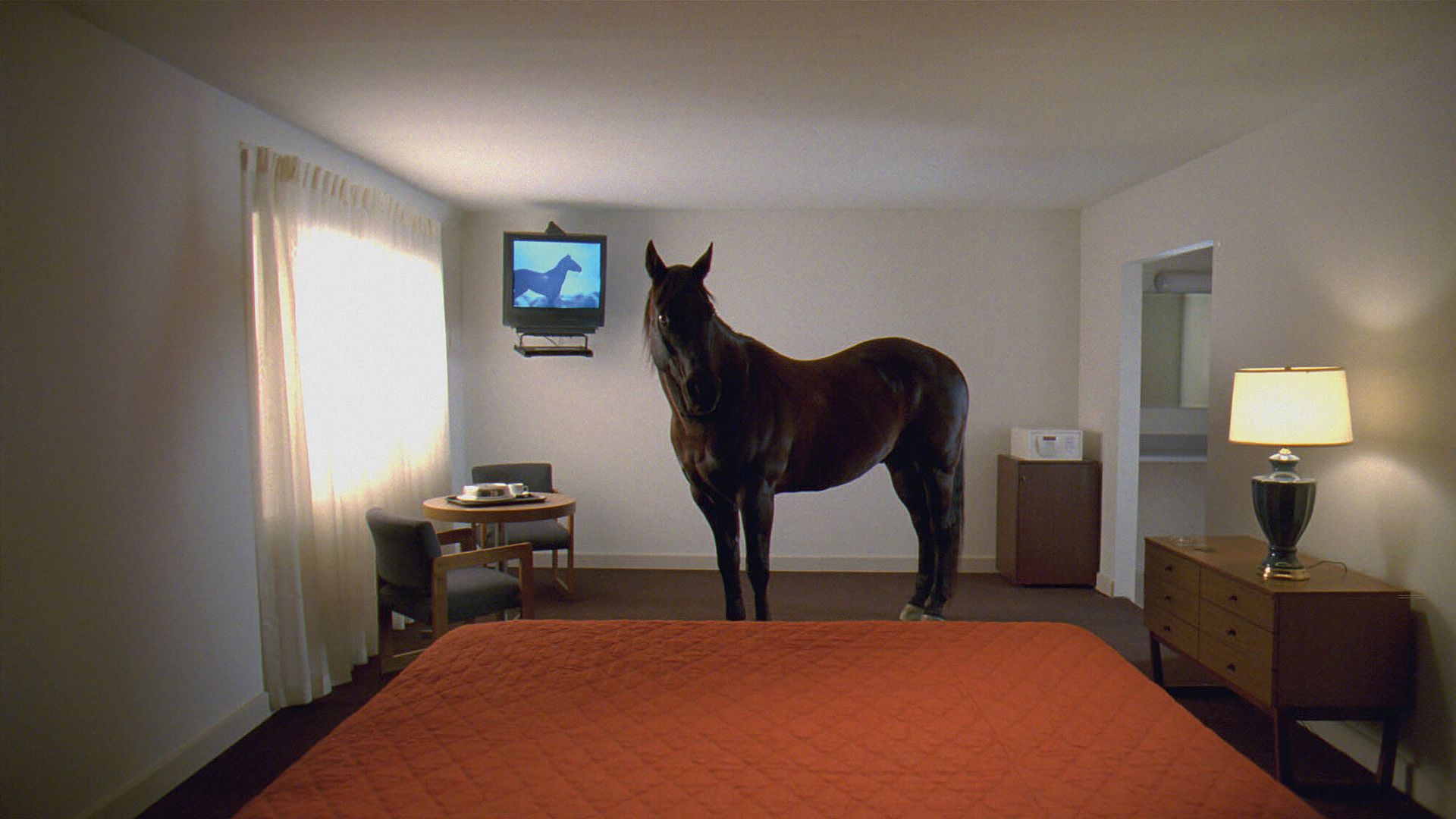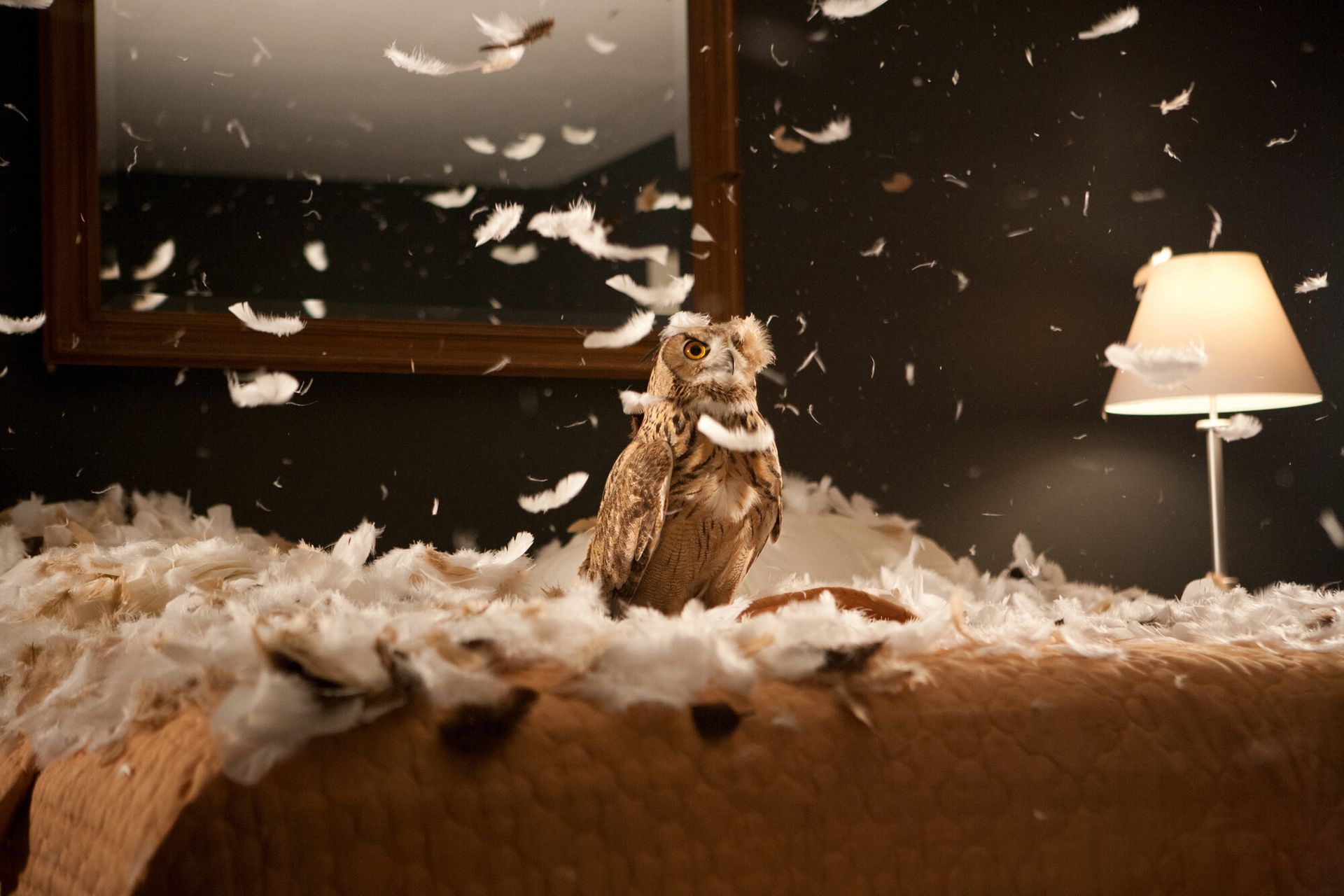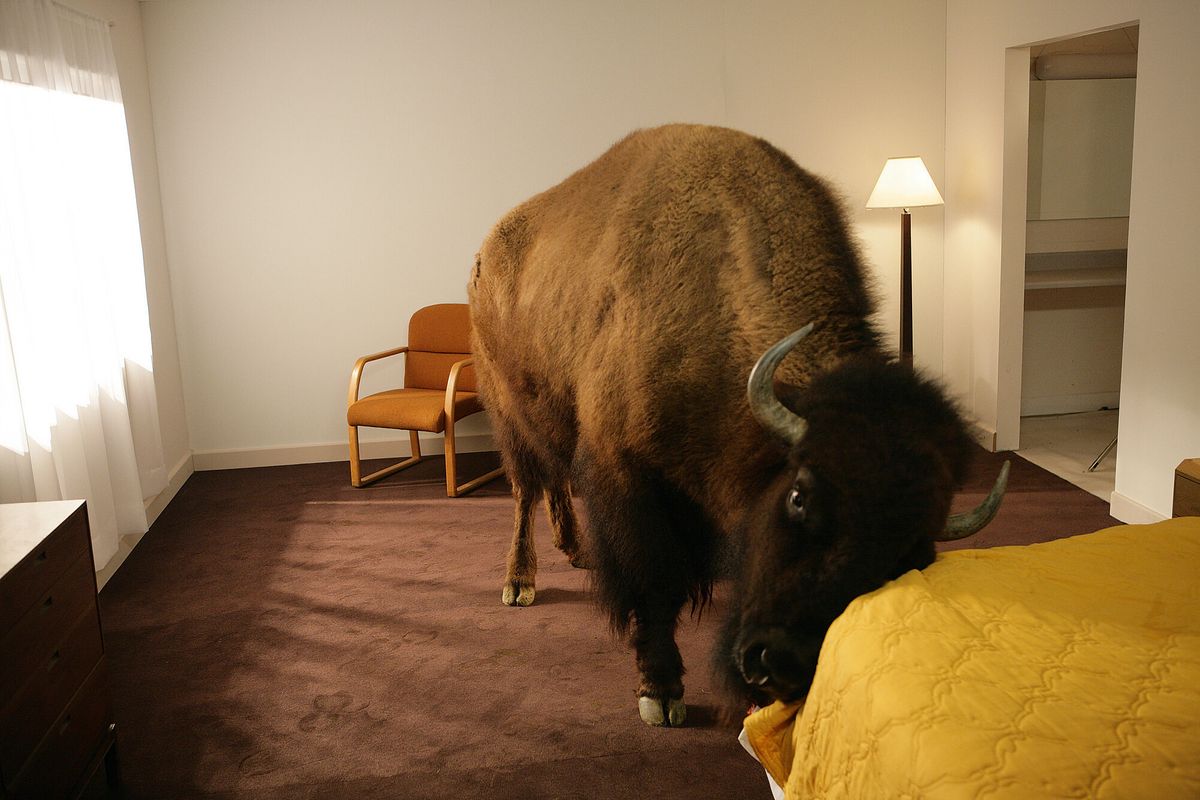With its doors shuttered while construction on a new building is underway, the Princeton University Art Museum has been staging exhibitions and installations across the university’s New Jersey campus to engage its students and local community on critical issues. For its latest public initiative, the museum is presenting migration (empire), a 24-minute video by Doug Aitken that addresses the connections between animal displacement and human activity. Projected on a 12ft by 5ft billboard near the Princeton train station, the piece invites students and commuters to consider their own migration and its social and environmental implications, from human and animal displacement to our relationships with nature.
Migration (empire) wascreated in 2008 and displayed at Princeton in 2010 when it entered the museum’s collection. At once humorous and bleak, the work features displaced North American migratory animals in human-made spaces, specifically small roadside motel rooms. In the video, the wild animals contrast sharply with the sterility of the spaces they occupy as a deer drinks from a swimming pool and mini bar and a disoriented beaver swims in a bathtub. One clip shows an owl sitting on a bed and surrounded by feathers that the animal seems to have torn from down-fill bedding, possibly taken from the bird’s avian relatives. In another, a horse watches a TV displaying wild horses running free. The camera cuts to the confined horse’s hooves walking on the carpeted floor as if preparing to run as well, emphasising the shared behaviour between the animals despite their disparate settings.

Still from Doug Aitken, migration (empire), 2008. Princeton University Art Museum © Doug Aitken / courtesy of the artist; 303 Gallery, New York; Galerie Eva Presenhuber, Zurich; Victoria Miro, London; Regen Projects, Los Angeles.
“The issues Aitken’s work engages—migration, displacement, the increasingly disjunctive effects of late capitalism for life of all kinds—have only become more prevalent and pressing since migration (empire) was created and first displayed at Princeton,” says Karl Kusserow, curator of American art at the museum. “The reinstallation offers an opportunity to reflect on these issues in the context of the growing movement of people and animals worldwide, much of it involuntary due to climate change and economic and political unrest.”
The choice of a billboard near the train station brings this engagement to the public and speaks directly to the video’s message. The work will be on view daily from 17 August to 10 December in the evenings during rush hour. “As commuters make their own personal migrations to and around Princeton, Aitken’s video provides a compelling critical gloss on the charged implications of movement today—socially, politically, environmentally—and asks us to consider the costs of the way we are living, estranged from the natural world that sustains us,” Kusserow says.

Still from Doug Aitken, migration (empire), 2008. Princeton University Art Museum © Doug Aitken / courtesy of the artist; 303 Gallery, New York; Galerie Eva Presenhuber, Zurich; Victoria Miro, London; Regen Projects, Los Angeles.
The latest presentation of migration (empire)is cosponsored by the museum, High Meadows Environmental Institute and the Lewis Center for the Arts. To engage the university’s student community, the museum has been working with different academic departments through coursework and panel discussions. This interdisciplinary engagement has been particularly beneficial since the museum’s closure in March of 2020 while they await a new Adjaye Associates-designed building, scheduled to open in spring 2025. The museum has staged various installations and exhibitions across campus, publicly and in its buildings, during construction.
“An incredibly exciting aspect of working in education and on academic engagement has been discovering the multitude of perspectives that one work can elicit,” says Veronica White, curator of teaching and learning at the museum. Most recently, the team worked with several courses from the school’s Spanish and Portuguese, anthropology and geosciences departments to examine issues raised in the 2022 exhibition Alexis Rockman: Shipwrecks, including climate change, migration, and the impact of seafaring activities.
White adds, “We imagine working with some of the same disciplines as we plan for fall courses that will discuss Aiken’s migration (empire), and we will certainly find new departments to invite to the conversation.”
- Doug Aitken: Migration (empire), 17 August-10 December, Princeton University, New Jersey


